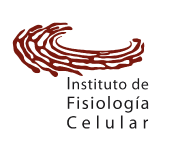Intracellular Mg2+ concentrations are differentially regulated in the sperm head and mid-piece in acrosome reaction inducing conditions.
Sánchez?Cárdenas, C., De la Vega?Beltrán, J. L., Weber, W. D., Orta, G., Sánchez?Guevara, Y., Hernández?Cruz, A., Darszon, A., & Visconti, P. E. (2024). Intracellular Mg2+ concentrations are differentially regulated in the sperm head and mid?piece in acrosome reaction inducing conditions. The FASEB Journal, 38(21). Portico. https://doi.org/10.1096/fj.202401243r
The sperm ability to fertilize involves the regulation of ATP levels. Because inside cells, ATP is complexed with Mg2+ ions, changes in ATP levels result in changes in intracellular Mg2+ concentration ([Mg2+]i), which can be followed using intracellular Mg2+ sensors such as Mag-520. In this work, we tested conditions known to decrease sperm ATP such as starvation and capacitation. As expected, in these conditions [Mg2+]i increased in all cell compartments. In contrast, when ATP increases, such as adding nutrients to starved sperm, [Mg2+]i significantly decreases in all compartments. On the other hand, when the acrosome reaction was induced, either with progesterone or with ionomycin, [Mg2+]i was differentially regulated in the head and mid-piece. While Mag-520 fluorescence increased in the sperm mid-piece, it decreased in the head. These changes were observed in capacitated as well as in starved sperm but not in sperm incubated in conditions that do not support capacitation. Changes in [Mg2+]i were still observed when the sperm were incubated in high extracellular Mg2+ suggesting that this decrease is not due to Mg2+ efflux. Interestingly, the progesterone and ionomycin effects on [Mg2+]i were abolished on sperm incubated in Ca2+-free media. Altogether, these results indicate that [Mg2+]i is regulated in sperm during capacitation and acrosomal reaction, and suggest that these measurements can serve to evaluate ATP levels in real time.



